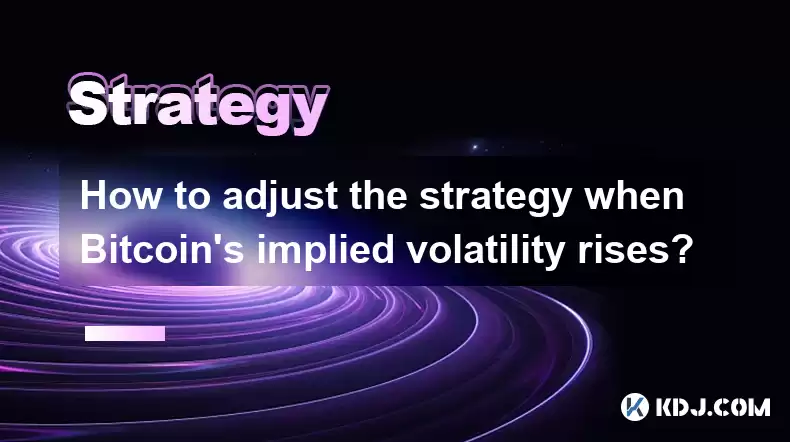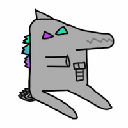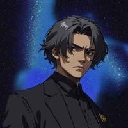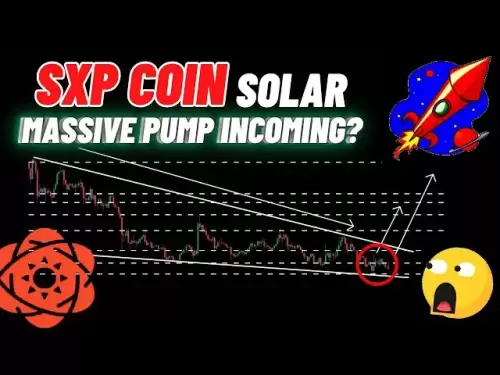-
 Bitcoin
Bitcoin $117600
0.81% -
 Ethereum
Ethereum $3740
2.85% -
 XRP
XRP $3.144
1.82% -
 Tether USDt
Tether USDt $1.000
-0.02% -
 BNB
BNB $783.9
2.87% -
 Solana
Solana $186.4
3.29% -
 USDC
USDC $0.0000
0.01% -
 Dogecoin
Dogecoin $0.2366
4.34% -
 TRON
TRON $0.3171
1.43% -
 Cardano
Cardano $0.8233
3.00% -
 Hyperliquid
Hyperliquid $44.24
6.38% -
 Sui
Sui $3.973
9.32% -
 Stellar
Stellar $0.4373
4.45% -
 Chainlink
Chainlink $18.36
4.93% -
 Hedera
Hedera $0.2662
12.25% -
 Bitcoin Cash
Bitcoin Cash $557.3
6.22% -
 Avalanche
Avalanche $24.05
3.14% -
 Litecoin
Litecoin $112.8
2.67% -
 UNUS SED LEO
UNUS SED LEO $8.994
0.20% -
 Shiba Inu
Shiba Inu $0.00001403
5.07% -
 Toncoin
Toncoin $3.211
4.17% -
 Ethena USDe
Ethena USDe $1.001
-0.02% -
 Uniswap
Uniswap $10.48
6.16% -
 Polkadot
Polkadot $4.110
4.03% -
 Monero
Monero $324.8
-1.64% -
 Dai
Dai $1.000
0.00% -
 Bitget Token
Bitget Token $4.571
0.92% -
 Pepe
Pepe $0.00001260
5.52% -
 Aave
Aave $297.3
4.47% -
 Cronos
Cronos $0.1321
4.62%
How to adjust the strategy when Bitcoin's implied volatility rises?
When Bitcoin's implied volatility rises, traders should adjust position sizes, use options strategies, and hedge to manage increased market fluctuations effectively.
Apr 20, 2025 at 08:35 am

When Bitcoin's implied volatility rises, it signals a shift in market dynamics that traders and investors need to adapt to effectively. Implied volatility is a critical metric in the world of cryptocurrencies, as it reflects the market's expectation of future price fluctuations based on options pricing. A rise in Bitcoin's implied volatility suggests that traders anticipate larger price swings, which can significantly impact trading strategies. In this article, we will explore various adjustments that can be made to trading strategies in response to increased implied volatility in Bitcoin.
Understanding Implied Volatility in Bitcoin
Implied volatility is derived from the pricing of Bitcoin options and indicates the market's forecast of a likely movement in Bitcoin's price over a specific period. When this volatility increases, it means that traders expect more significant price movements, either upward or downward. This heightened expectation of volatility can be driven by various factors, including macroeconomic news, regulatory changes, or shifts in investor sentiment.
To adjust strategies effectively, it's essential to understand that higher implied volatility often leads to higher option premiums. This is because options become more valuable as the potential for larger price swings increases. Traders need to consider this when deciding whether to buy or sell options, and how to structure their portfolios.
Adjusting Position Sizing and Risk Management
One of the first steps to take when Bitcoin's implied volatility rises is to reassess your position sizing and risk management strategies. Higher volatility means that the potential for both gains and losses increases. Therefore, it's crucial to adjust the size of your positions to manage risk effectively.
- Reduce Position Sizes: When volatility increases, consider reducing the size of your positions to limit potential losses. Smaller positions can help you stay in the market without exposing yourself to excessive risk.
- Increase Stop-Loss Levels: Adjust your stop-loss orders to account for the increased volatility. Wider stop-loss levels can prevent your positions from being stopped out prematurely due to normal market fluctuations.
- Diversify Your Portfolio: Higher volatility can make the market more unpredictable. Diversifying your portfolio across different assets or strategies can help mitigate risk.
Utilizing Options Strategies
Options are powerful tools for managing risk and capitalizing on volatility. When Bitcoin's implied volatility rises, options strategies can be adjusted to take advantage of the increased premiums and potential price movements.
- Selling Options: Selling options can be profitable when volatility is high, as the premiums are higher. Strategies like selling covered calls or cash-secured puts can generate income while providing some downside protection.
- Straddles and Strangles: These strategies involve buying both a call and a put option with the same expiration date. A straddle uses the same strike price, while a strangle uses different strike prices. These strategies can be effective in volatile markets, as they profit from significant price movements in either direction.
- Iron Condors: This strategy involves selling an out-of-the-money call spread and an out-of-the-money put spread simultaneously. It can be used to profit from a range-bound market, which can be beneficial if you expect volatility to decrease after an initial spike.
Hedging Against Volatility
When Bitcoin's implied volatility rises, it's also important to consider hedging strategies to protect your portfolio. Hedging can help mitigate potential losses from adverse price movements.
- Buying Put Options: Purchasing put options can provide insurance against a decline in Bitcoin's price. This can be particularly useful if you hold a significant position in Bitcoin and want to protect against downside risk.
- Using Futures Contracts: Futures contracts can be used to hedge against price movements. By taking a short position in Bitcoin futures, you can offset potential losses in your Bitcoin holdings.
- Diversification into Stablecoins: Allocating a portion of your portfolio to stablecoins can provide stability during periods of high volatility. Stablecoins are pegged to less volatile assets like the US dollar, offering a safe haven in turbulent markets.
Adapting to Market Sentiment
Market sentiment plays a crucial role in driving Bitcoin's implied volatility. When volatility rises, it's often accompanied by shifts in investor sentiment, which can be gauged through various indicators such as social media sentiment, news sentiment, and market sentiment indices.
- Monitor Sentiment Indicators: Keep an eye on sentiment indicators to understand the market's mood. Tools like the Fear and Greed Index or social media sentiment analysis can provide insights into whether the market is overly optimistic or pessimistic.
- Adjust Your Strategy Accordingly: If sentiment indicators suggest extreme fear or greed, consider adjusting your strategy to capitalize on potential reversals. For example, if sentiment is extremely fearful, it might be an opportunity to buy, while extreme greed might signal a time to sell or reduce exposure.
- Stay Informed: Stay updated with the latest news and developments in the cryptocurrency space. Regulatory announcements, macroeconomic news, and technological advancements can all impact Bitcoin's volatility and should be factored into your strategy.
Technical Analysis and Volatility
Technical analysis can be a valuable tool when Bitcoin's implied volatility rises. By studying price charts and indicators, traders can identify potential entry and exit points and better manage their positions in volatile markets.
- Use Volatility Indicators: Indicators like the Average True Range (ATR) or Bollinger Bands can help measure volatility and identify potential breakouts or breakdowns. These indicators can guide your decision-making process in volatile markets.
- Identify Support and Resistance Levels: High volatility can lead to significant price movements that test key support and resistance levels. Identifying these levels can help you set more effective stop-loss and take-profit orders.
- Adapt Your Trading Style: In highly volatile markets, consider adopting a more flexible trading style. Short-term trading strategies like scalping or day trading might be more suitable than long-term holding strategies during periods of high volatility.
Frequently Asked Questions
Q: How can I predict when Bitcoin's implied volatility will rise?
A: Predicting when Bitcoin's implied volatility will rise can be challenging, but you can monitor several indicators. Look for significant news events, regulatory announcements, or shifts in market sentiment that could trigger volatility. Additionally, technical indicators like the VIX for cryptocurrencies or implied volatility indices can provide insights into potential volatility spikes.
Q: Are there any tools or platforms that can help me manage my strategy when Bitcoin's implied volatility rises?
A: Yes, several tools and platforms can assist with managing your strategy during periods of high volatility. Platforms like TradingView offer advanced charting and technical analysis tools, while options analytics platforms like Deribit or Binance Options can provide detailed insights into implied volatility and options pricing. Additionally, risk management software can help you monitor and adjust your positions in real-time.
Q: How often should I review and adjust my strategy when Bitcoin's implied volatility is high?
A: When Bitcoin's implied volatility is high, it's advisable to review and adjust your strategy more frequently. Daily or even intraday reviews can be beneficial, as market conditions can change rapidly. However, the frequency of adjustments should also depend on your trading style and risk tolerance. If you're a long-term investor, weekly reviews might be sufficient, while active traders may need to adjust their strategies multiple times a day.
Q: Can historical data help in adjusting my strategy when Bitcoin's implied volatility rises?
A: Yes, historical data can be a valuable resource for adjusting your strategy during periods of high implied volatility. By analyzing past volatility spikes and the market's response, you can identify patterns and potential strategies that have been effective in similar situations. Historical data can also help you backtest your strategies to see how they would have performed during previous periods of high volatility.
Disclaimer:info@kdj.com
The information provided is not trading advice. kdj.com does not assume any responsibility for any investments made based on the information provided in this article. Cryptocurrencies are highly volatile and it is highly recommended that you invest with caution after thorough research!
If you believe that the content used on this website infringes your copyright, please contact us immediately (info@kdj.com) and we will delete it promptly.
- VIRTUAL Weekly Drop: Recovery Analysis and Privacy Push
- 2025-07-26 08:50:11
- Bitcoin, Cynthia Lummis, and Freedom Money: A New Yorker's Take
- 2025-07-26 08:30:11
- Crypto Gainers, Top 10, Week 30: Altcoins Buck the Trend
- 2025-07-26 08:55:12
- Solana, Altcoins, and Coinbase: What's the Buzz?
- 2025-07-26 06:30:12
- XRP in 2025: Bull Run or Bust?
- 2025-07-26 07:30:12
- Ruvi AI Presale Heats Up: Early Investors Eyeing Big Gains
- 2025-07-26 09:10:13
Related knowledge

How to avoid common crypto investment mistakes?
Jul 13,2025 at 01:35am
Understanding the Risks of Crypto InvestmentInvesting in cryptocurrency can be highly rewarding, but it also comes with significant risks. One of the ...

What is a long-short crypto strategy?
Jul 15,2025 at 10:56am
Understanding the Basics of a Long-Short Crypto StrategyA long-short crypto strategy is an investment approach where traders simultaneously take long ...

What is a long-short crypto strategy?
Jul 11,2025 at 01:28pm
Understanding the Basics of Long-Short Crypto StrategyA long-short crypto strategy is an investment approach where traders take both long and short po...

How to use the RSI indicator for crypto?
Jul 12,2025 at 03:56pm
Understanding the RSI Indicator in Cryptocurrency TradingThe Relative Strength Index (RSI) is a momentum oscillator used to measure the speed and chan...

Is copy trading a good strategy for crypto beginners?
Jul 12,2025 at 08:28am
Understanding Copy Trading in the Cryptocurrency MarketCopy trading is a strategy where novice traders replicate the trades of experienced investors a...

How to build a crypto portfolio with $1000?
Jul 13,2025 at 08:14pm
Understanding the Basics of Cryptocurrency InvestmentBuilding a crypto portfolio with $1000 starts with understanding the fundamentals of cryptocurren...

How to avoid common crypto investment mistakes?
Jul 13,2025 at 01:35am
Understanding the Risks of Crypto InvestmentInvesting in cryptocurrency can be highly rewarding, but it also comes with significant risks. One of the ...

What is a long-short crypto strategy?
Jul 15,2025 at 10:56am
Understanding the Basics of a Long-Short Crypto StrategyA long-short crypto strategy is an investment approach where traders simultaneously take long ...

What is a long-short crypto strategy?
Jul 11,2025 at 01:28pm
Understanding the Basics of Long-Short Crypto StrategyA long-short crypto strategy is an investment approach where traders take both long and short po...

How to use the RSI indicator for crypto?
Jul 12,2025 at 03:56pm
Understanding the RSI Indicator in Cryptocurrency TradingThe Relative Strength Index (RSI) is a momentum oscillator used to measure the speed and chan...

Is copy trading a good strategy for crypto beginners?
Jul 12,2025 at 08:28am
Understanding Copy Trading in the Cryptocurrency MarketCopy trading is a strategy where novice traders replicate the trades of experienced investors a...

How to build a crypto portfolio with $1000?
Jul 13,2025 at 08:14pm
Understanding the Basics of Cryptocurrency InvestmentBuilding a crypto portfolio with $1000 starts with understanding the fundamentals of cryptocurren...
See all articles

























































































